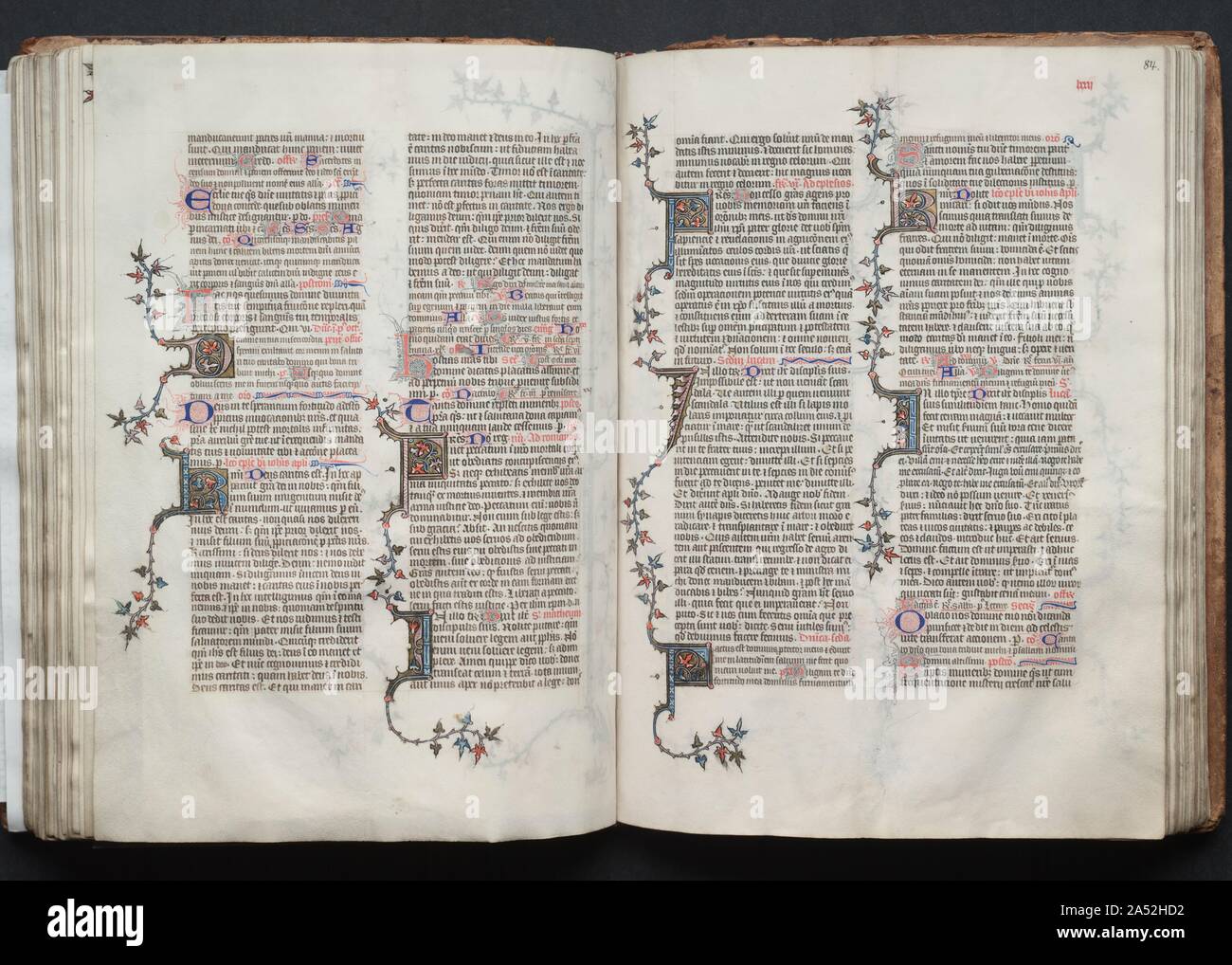The Gotha Missal: Fol. 83v, Text, c. 1375. The style and quality of this manuscript's decoration is typical of deluxe Parisian books made for aristocratic or royal patrons. Most of the book's decoration appears to be the work of the Master of the Boqueteaux, an artist active at the court of King Charles V (died 1380). His style was apparently shared by a number of book illuminators working in and around Paris. It is very possible that the Gotha Missal belonged to Charles V, but is not provable because the manuscript has no royal portraits and lacks a colophon. Given the book's magnificent de

Image details
Contributor:
Heritage Image Partnership Ltd / Alamy Stock PhotoImage ID:
2A52HD2File size:
121.2 MB (5.1 MB Compressed download)Releases:
Model - no | Property - noDo I need a release?Dimensions:
7700 x 5500 px | 65.2 x 46.6 cm | 25.7 x 18.3 inches | 300dpiPhotographer:
Heritage Art/Heritage ImagesMore information:
This image could have imperfections as it’s either historical or reportage.
The Gotha Missal: Fol. 83v, Text, c. 1375. The style and quality of this manuscript's decoration is typical of deluxe Parisian books made for aristocratic or royal patrons. Most of the book's decoration appears to be the work of the Master of the Boqueteaux, an artist active at the court of King Charles V (died 1380). His style was apparently shared by a number of book illuminators working in and around Paris. It is very possible that the Gotha Missal belonged to Charles V, but is not provable because the manuscript has no royal portraits and lacks a colophon. Given the book's magnificent decoration, however, it would seem that it was produced for a Valois prince, if not for the king himself. The manuscript receives its name from the German dukes of Gotha, its later owners.